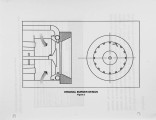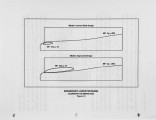| Title |
NOx Control for Conventional Gas Burners |
| Creator |
Monro, Richard J.; Skidmore, Wally; Rodriguez, Mark |
| Publisher |
University of Utah |
| Date |
1994 |
| Spatial Coverage |
presented at Maui, Hawaii |
| Abstract |
Reexamining conventional gas burner design may lead to NOx compliance for less than $3/kW. Extensive computational fluid dynamic parametric studies of the conventional burners on a 105 MW unit resulted in a new concept for using burner dynamics to induce inert gas NOx control effects within the burner/furnace interface. Modeling indicates potential NOx reductions up to 75% without external flue-gas recirculation or overfire air. The paper contains computational fluid dynamics (CFD) modeling and preliminary field performance test results. Simple changes to the gas injection dynamics and a new flame stabilizer were the only mechanical changes made to the burners. This unit is the first of two utility units to be adapted to the low NOx firing concept. |
| Type |
Text |
| Format |
application/pdf |
| Language |
eng |
| Rights |
This material may be protected by copyright. Permission required for use in any form. For further information please contact the American Flame Research Committee. |
| Conversion Specifications |
Original scanned with Canon EOS-1Ds Mark II, 16.7 megapixel digital camera and saved as 400 ppi uncompressed TIFF, 16 bit depth. |
| Scanning Technician |
Cliodhna Davis |
| ARK |
ark:/87278/s6mg7s3f |
| Setname |
uu_afrc |
| ID |
8272 |
| Reference URL |
https://collections.lib.utah.edu/ark:/87278/s6mg7s3f |
















